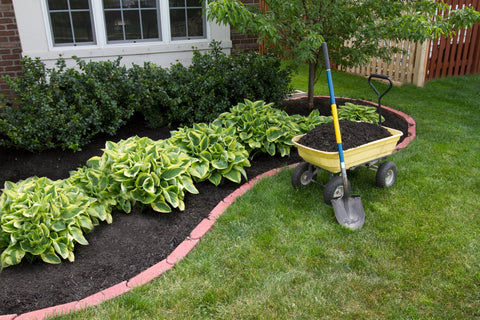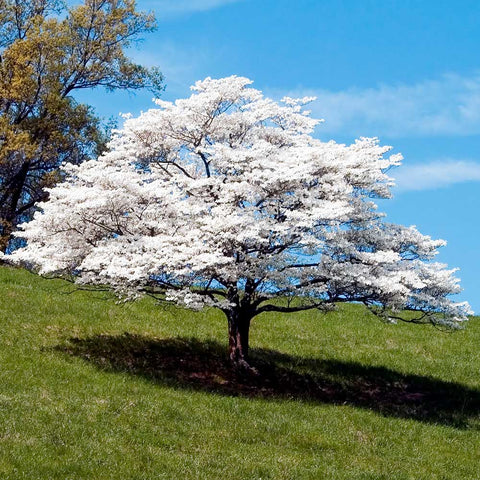Water is a precious resource on this planet, and gardeners are intimately familiar with how much it takes to keep flowers, vegetables, and lawns thriving. It’s not uncommon to run the hose or sprinkler from dawn to dusk during the dog days of summer. But there is a very simple, sustainable gardening practice that dramatically reduces how much water a garden requires—mulching.
Mulching isn’t complicated or costly. In fact, it may be one of the easiest sustainable gardening methods to save water and also improve soil, suppress weeds, and keep plants healthier. Let’s take a look at how mulching works, why it’s so effective, and how you can easily put it into practice in your own yard.
What is Mulch?
Mulch is any material that covers the soil around your plants. It can be made from many things—shredded bark, wood chips, straw, grass clippings, compost, or even small stones and gravel. Mulch is simply the layer that acts as a blanket for the soil.
Without mulch, the hot sun beats down on bare dirt. With mulch, the soil is shielded. Water in the soil doesn’t evaporate as quickly, and plant roots stay cooler and moister for longer periods of time.

How Does Mulch Save Water?
One of the primary reasons that gardens lose water is by evaporation. Pour a glass of water on a sidewalk on a sunny day and watch it disappear. The same thing happens in your garden soil. When soil is bare, heat and wind quickly pull moisture away, which means more frequent watering is required.
Mulch slows this process down. Covering the soil with mulch traps moisture underneath, where plant roots can reach it. Gardens with mulch use up to 50% less water than those without mulch. That means less time watering, smaller water bills, and less stress on local water supplies.
Other Benefits of Mulching
In addition to saving water, mulching has a number of other helpful benefits:
Keeps Soil Cool and Healthy
In the summer, bare soil can become scorching hot, even hotter than the air temperature. This high heat stresses plants and dries out roots. Mulch helps to regulate soil temperature by keeping it cooler in the summer months and warmer in the winter months.

Prevents Weeds
Weeds compete with your plants for water and nutrients. A thick layer of mulch blocks sunlight from reaching weed seeds. This stops many weed seeds from sprouting in the first place. Fewer weeds in the garden means your plants get more of the water and food they need.
Improves Soil Quality
Organic mulches—those made from bark, straw, or leaves—break down over time and turn into rich organic matter. This improves soil texture, allowing it to be easier for roots to grow and the soil to hold water.
Protects Against Erosion
Heavy rain or over-watering can wash soil away, especially if you’re on a slope. Mulch reduces the impact of falling water and helps to keep soil in place, protecting delicate root systems.
Adds Beauty to the Garden
Mulch isn’t just practical; it also looks nice. A tidy layer of mulch around flowers, shrubs, or vegetable beds makes the garden look more tended and cared for.
Types of Mulch
There are two broad categories of mulch—organic and inorganic.
Organic Mulches
These include natural materials such as shredded bark, straw, pine needles, compost, wood chips, or grass clippings. They are the most popular because they actually enrich the soil as they decompose. The tradeoff is that they do need to be replenished about once every year or two.
Inorganic Mulches
These include gravel, small stones, rubber chips, or landscaping fabric. Inorganic mulches are long-lasting since they do not break down, but they do not improve soil quality. Inorganic mulch is most often used in areas where a permanent, low-maintenance solution is desired.
How to Mulch Your Garden
Applying mulch is easy and doesn’t require any special tools. Here’s a step-by-step guide:
Prepare the Area
Pull out any existing weeds. It’s important to start with a weed-free area because if you lay mulch over weeds, some of them will still find a way to grow up through.
Water the Soil
Give the area a good soaking before applying mulch. You want the soil underneath to be moist so that the mulch can help hold that moisture in.
Spread the Mulch
Spread the mulch out evenly around your plants. A good depth is usually 2–4 inches of organic mulch. Too little and weeds may still sprout. Too much and the roots may not get enough air.
Keep Mulch Away from Stems
Avoid piling mulch directly against the stems of plants, tree trunks, or vegetable stalks. Leave a small gap (about 2 inches) to prevent rot and discourage pests.
Replenish as Needed
Organic mulch will break down and become part of the soil over time. That’s good, but it also means you’ll need to add a fresh layer every year or two to maintain those benefits.
Best Mulches for Saving Water
Wood Chips or Shredded Bark – Long-lasting and attractive, great for flower beds or around shrubs and trees.
Straw or Hay – Lightweight and easy to spread, great for vegetable gardens.
Grass Clippings – Free option, though best to use in thin layers so that they don’t clump or smell.
Compost – Acts as both mulch and soil conditioner, perfect for vegetable and herb gardens.
Pine Needles – Great for acid-loving plants such as blueberries and azaleas.
Gravel or Stones – Ideal for dry areas or pathways where you want long-term coverage and no need to replenish.
Real Life Example: A Garden That Uses Half the Water
Imagine a pair of neighbors with vegetable gardens side by side. One leaves the soil bare, while the other spreads a 3-inch layer of straw mulch around her tomatoes, cucumbers, and peppers.
By mid-summer, the bare-soil gardener is out there watering every single day just to keep his plants from wilting. The soil dries out quickly under the hot sun. The mulched gardener, on the other hand, only has to water every three to four days because the soil stays moist much longer. She also finds that her plants are healthier because the roots are cooler and stronger.
At the end of the season, the mulched garden has not only saved gallons of water but has also produced a better yield with less work involved.

Why Mulching is a Sustainable Practice
Mulching ticks all of the boxes of what makes a gardening practice sustainable:
Conserves water – by dramatically reducing demand on local water supplies.
Reduces the need for chemicals – fewer weeds means less need for herbicides.
Improves soil naturally – organic mulches feed the soil as they break down.
Lowers waste – many materials we have around the yard, like grass clippings, leaves, and kitchen scraps, can all be turned into mulch instead of going to the landfill.
It’s a simple gardening practice with a big impact that anyone—from backyard gardeners to community parks—can put into practice.
Sustainable gardening doesn’t need to be complicated or expensive. Mulching is one of the easiest and most effective ways to dramatically reduce water use and also create healthier, more attractive gardens. By covering the soil with organic or inorganic materials, you can hold in moisture, prevent weeds, protect roots, and enrich the soil.
In a time when water conservation is more important than ever, mulching offers a simple solution that every gardener can adopt. Whether you use wood chips, straw, or even recycled yard waste, a simple layer of mulch is a small step that makes a big difference.
So the next time you’re out in the garden, consider giving your soil a “blanket.” Your plants will thrive, your water bill will shrink, and you’ll be helping the environment—all thanks to the power of mulch.




